Last updated on
Discover the ideal lumens for your kitchen light to create a perfectly illuminated and inviting cooking space that enhances productivity and ambiance.
A large LED ceiling light will provide enough illumination in the kitchen:
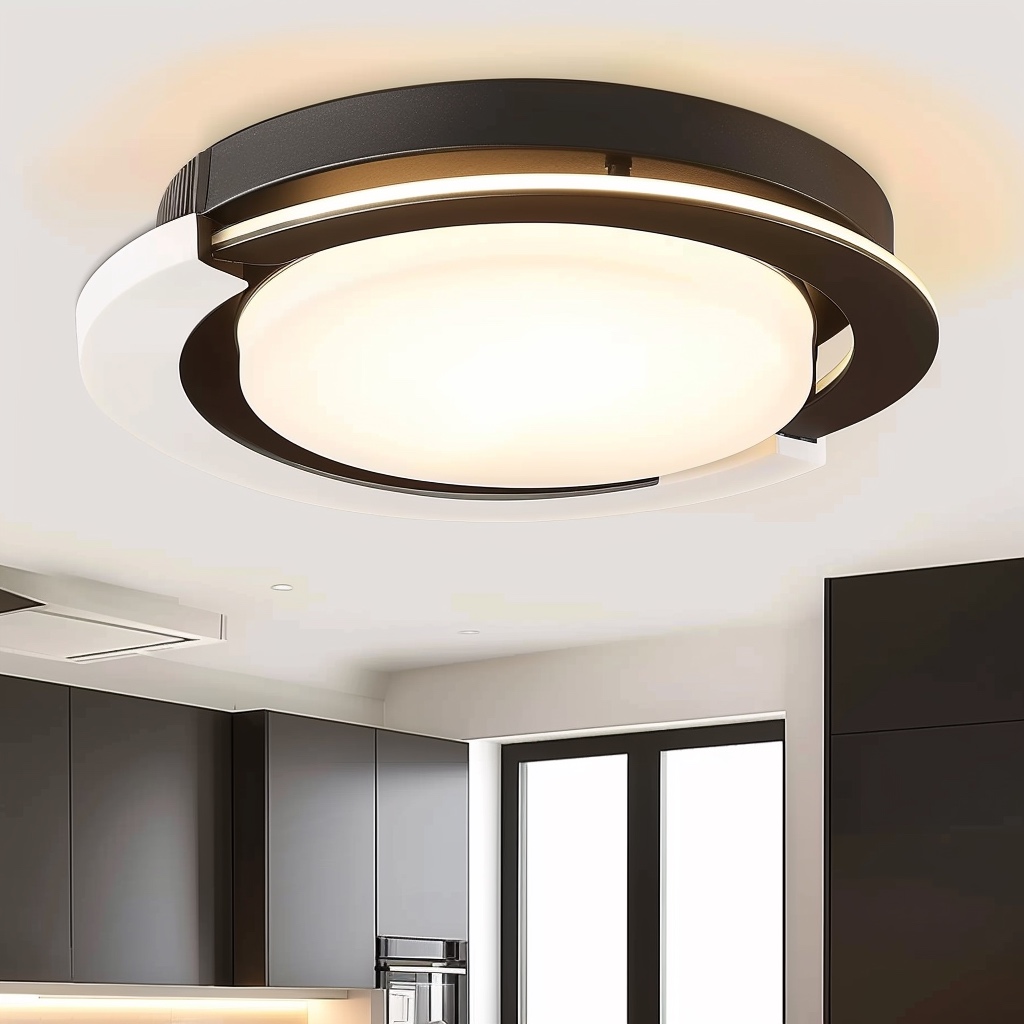
The kitchen is the heart of any home, and it’s essential to have adequate lighting in this space. But with so many options out there, how do you know how many lumens your kitchen light should be? A poorly lit kitchen can make cooking and meal prep a challenge, while too bright of lighting can be harsh on the eyes.
In this article, we’ll explore the ideal number of lumens for your kitchen lighting needs so that you can create a warm and inviting space that’s both functional and stylish. So let’s get started!
What's Inside
What Are Lumens?

The higher the number of lumens, the brighter and more intense the light will be. In contrast, lower lumen bulbs produce dimmer lighting that is ideal for creating ambiance in your kitchen.
When it comes to choosing kitchen lighting, understanding lumens is crucial because it helps you determine how much brightness you need to illuminate your space effectively. It’s important to note that wattage doesn’t necessarily equate to brightness since different types of bulbs can have varying levels of efficiency.
So when shopping for new lights or fixtures for your kitchen, pay attention not only to wattage but also look at their lumen output rating as well.
Ideal Lumen Range for Kitchens
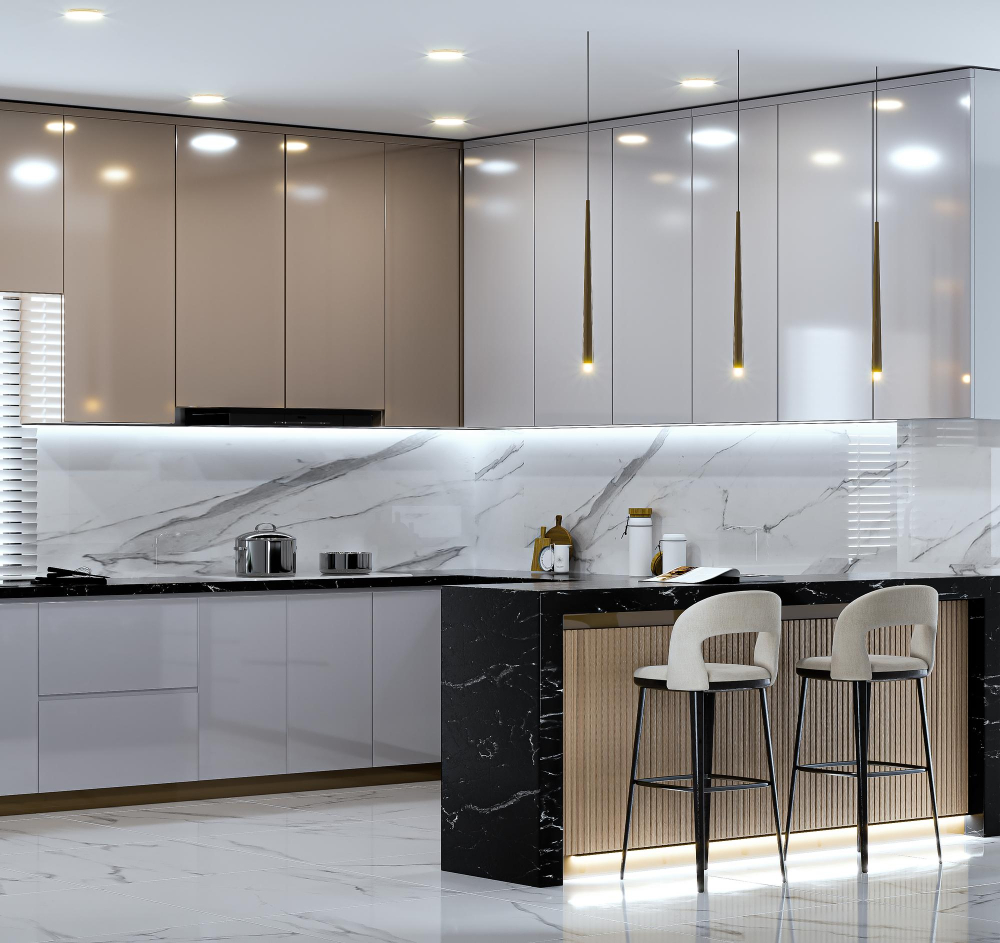
This range provides enough brightness to illuminate the entire space while also allowing you to adjust the lighting levels based on your needs. However, keep in mind that this number can vary depending on factors such as kitchen size and ceiling height.
If your kitchen is small or has low ceilings, you may not need as many lumens to achieve adequate lighting. On the other hand, if your kitchen is large with high ceilings or has dark-colored walls that absorb light easily, you may need more lumens than average.
It’s important to note that having too much light can be just as problematic as having too little light in a kitchen setting. Overly bright lights can cause glare and eye strain when performing tasks like chopping vegetables or reading recipes.
Factors Affecting Lumen Requirements
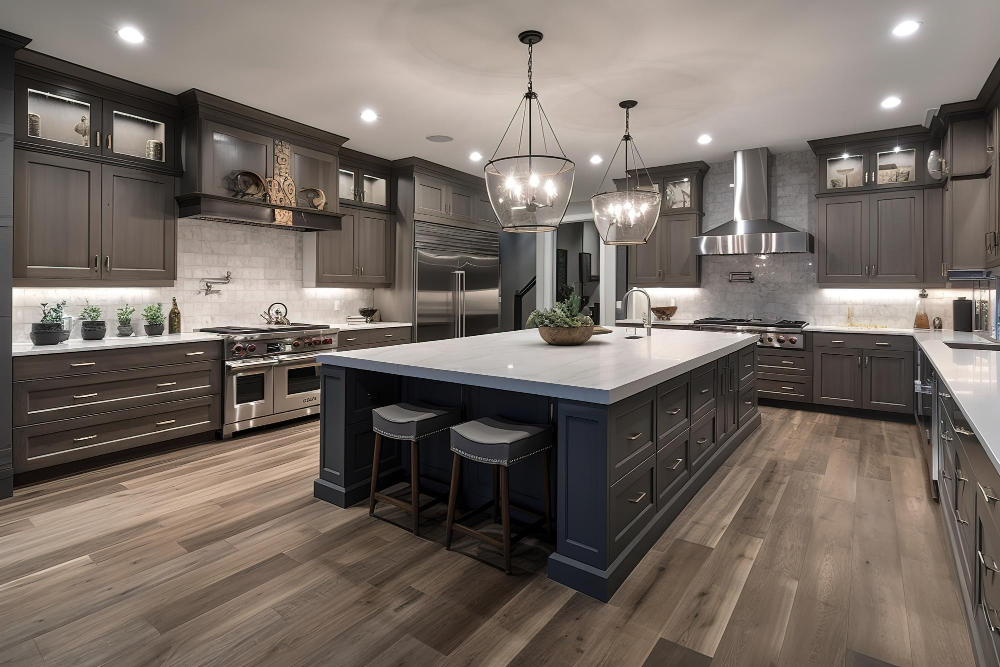
One of the most significant factors is the size of your kitchen. A larger space will require more lumens to ensure adequate illumination, while a smaller area may need fewer lumens to avoid over-brightening.
Another factor that affects lumen requirements is ceiling height. Higher ceilings may require more powerful lights or additional fixtures to distribute light evenly throughout the room.
The color of your walls and cabinets can also impact how many lumens you need in your kitchen lighting setup. Darker colors absorb light, so if you have dark-colored surfaces in your kitchen, you’ll likely need brighter lights than if everything was white or lighter colored.
Consider any natural light sources in or near your kitchen when determining how many lumens are necessary for optimal illumination levels during different times of day and weather conditions.
Task-Specific Lumens in Kitchens
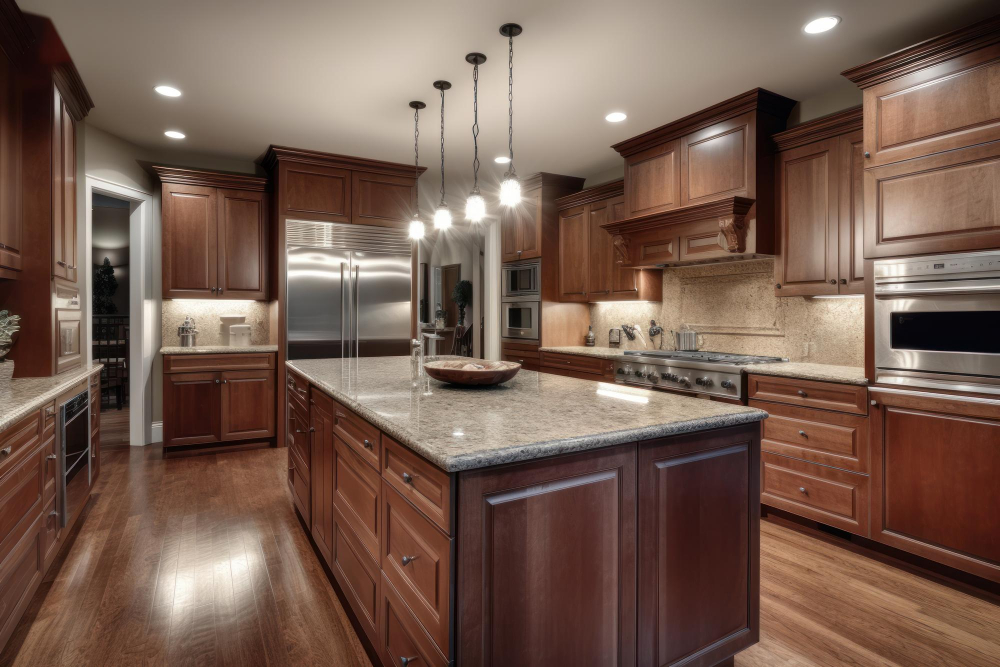
Task lighting is designed to provide focused light on specific work surfaces, such as countertops and stovetops. These areas require brighter light than other parts of the kitchen because they’re where food preparation takes place.
For example, if your countertop is 3 feet long and requires 50 lumens per square foot of space, then you’ll need a total of 4500 lumens (50 x 3 x 3 =450) for that area alone. Similarly, if your stove top needs around 70-80 Lumens per square foot (depending on how much heat output there is), then a range hood with at least two bulbs can be used to achieve this level.
Ambient Vs. Task Lighting
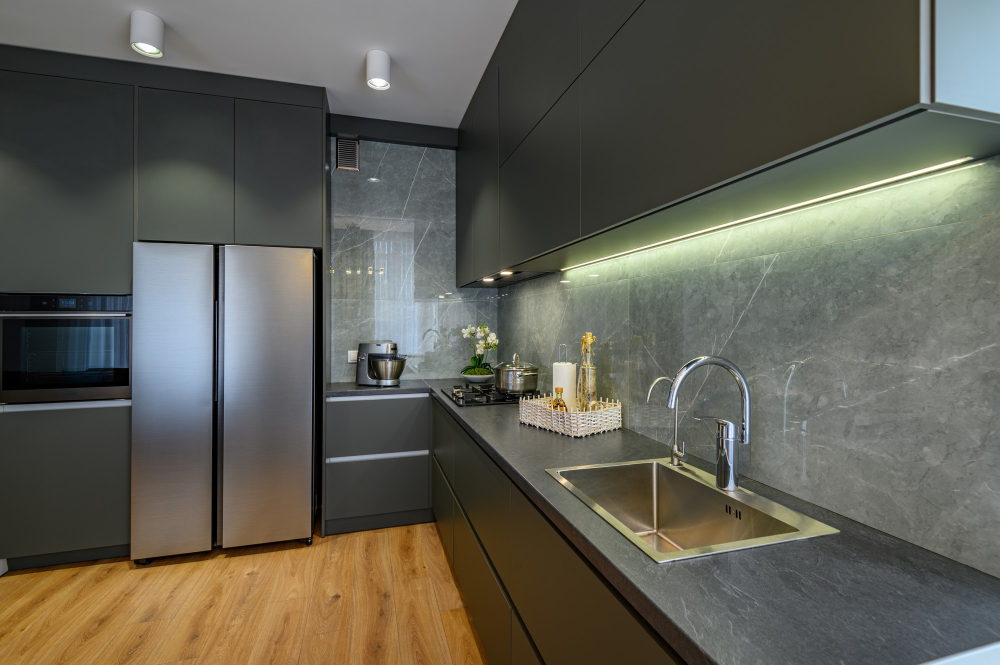
Ambient lighting provides overall illumination for the entire space, while task lighting is designed to illuminate specific areas where you need more light for tasks such as cooking or food prep.
Ambient lights can be ceiling-mounted fixtures like chandeliers or recessed lights that provide general illumination throughout the room. They create a warm and inviting atmosphere in your kitchen by filling in any shadows created by other sources of light.
Task lights, on the other hand, are focused on specific work areas such as countertops or stovetops. These include under-cabinet LED strips that provide bright white light directly onto your workspace without casting harsh shadows.
It’s important to strike a balance between these two types of lighting when designing your kitchen’s layout so that you have enough brightness where needed but also avoid over-illumination which can cause eye strain and headaches.
Layering Kitchen Lights: Ambient, Task, and Accent Lighting
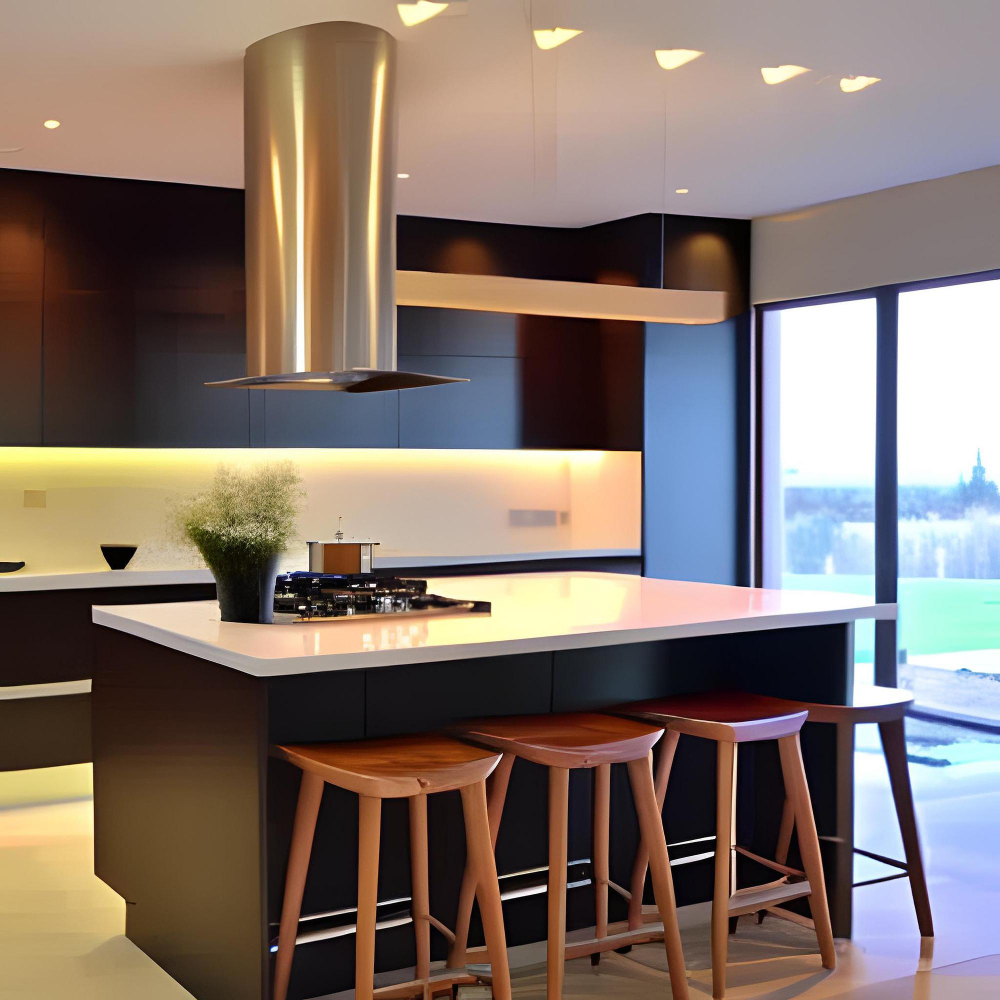
By combining different types of lighting fixtures in your kitchen design plan, you can create a warm and inviting space that’s both functional and stylish. There are three main types of lighting to consider when designing your kitchen: ambient lighting for overall illumination; task-specific lights for specific work areas such as the sink or stove; and accent lights that add visual interest.
Ambient Lighting Ambient light provides general illumination throughout the room. It should be bright enough to see everything clearly but not so bright that it creates harsh shadows or glare.
Ceiling-mounted fixtures like chandeliers or recessed downlights are great options for ambient light.
Task-Specific Lighting Task-specific lights provide focused illumination where you need it most – over countertops, sinks, stoves etc., making food preparation easier while reducing eye strain caused by poor visibility in these areas.
Accent Lighting Accent lights add visual interest by highlighting architectural features such as cabinets or artwork on walls with directional spotlights placed above them.
Proper Light Distribution
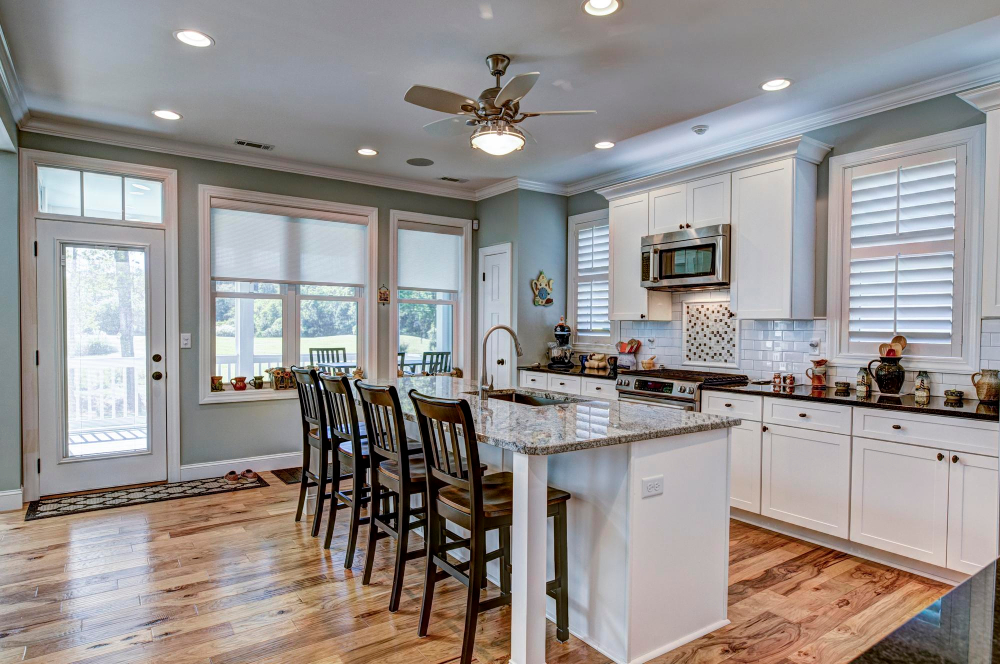
You want to ensure that your entire kitchen space is well-lit and free of any dark spots or shadows. To achieve this, consider using multiple light sources throughout the room.
One effective way to distribute light evenly in a kitchen is by layering different types of lighting fixtures. For example, you can use recessed lights for ambient lighting and pendant lights over the island or sink for task-specific illumination.
Another important factor in achieving proper light distribution is placing your fixtures strategically. Avoid placing them too close together as this can create harsh shadows and glare on surfaces like countertops.
Instead, aim for an even spread of fixtures across the ceiling with adequate spacing between each one based on their size and brightness level.
Kitchen Size Considerations
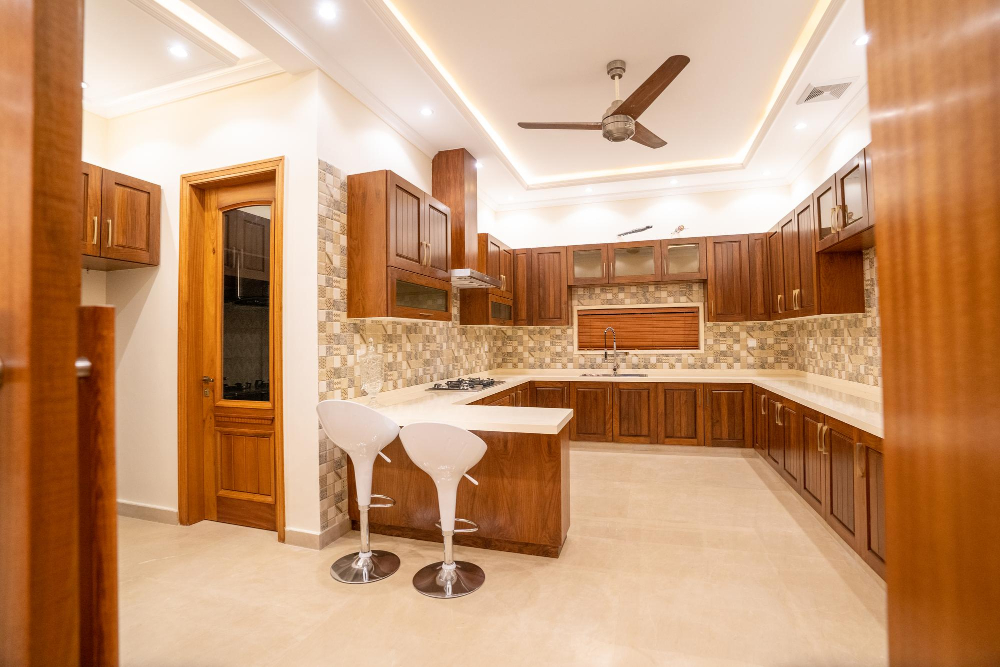
A small kitchen may require fewer lumens than a larger one, while a large kitchen may need more light sources and higher lumen output for proper illumination. As a general rule of thumb, you should aim for 50-100 lumens per square foot in your kitchen area.
For example, if you have a 10×10-foot kitchen (100 square feet), you’ll want to aim for around 5,000-10,000 total lumens. This can be achieved through various combinations of ambient and task lighting fixtures such as recessed lights or pendant lights over the island or sink.
On the other hand, if you have an open-concept living space with an attached dining room that flows into your cooking area without any walls separating them – then it’s important to take into account all areas when calculating how many total lumens are needed throughout this entire zone rather than just focusing on one specific spot like above countertops or islands.
Ceiling Height Influence

If you have a high ceiling, you’ll need more lumens to ensure adequate illumination throughout the space. On the other hand, if your ceiling is lower, fewer lumens may be necessary as light will reflect off surfaces and bounce around more easily.
For example, a standard 8-foot ceiling typically requires about 20-30 lumens per square foot of space. However, if your kitchen has higher ceilings (10 feet or taller), you may need up to 50-60 lumens per square foot.
It’s also important to note that installing lights too close or too far from high ceilings can affect their effectiveness in illuminating the entire room evenly. Therefore it’s essential always to consult with an expert before making any decisions on lighting installation in kitchens with tall ceilings.
Taking Wall Color Into Account When Choosing Lumens
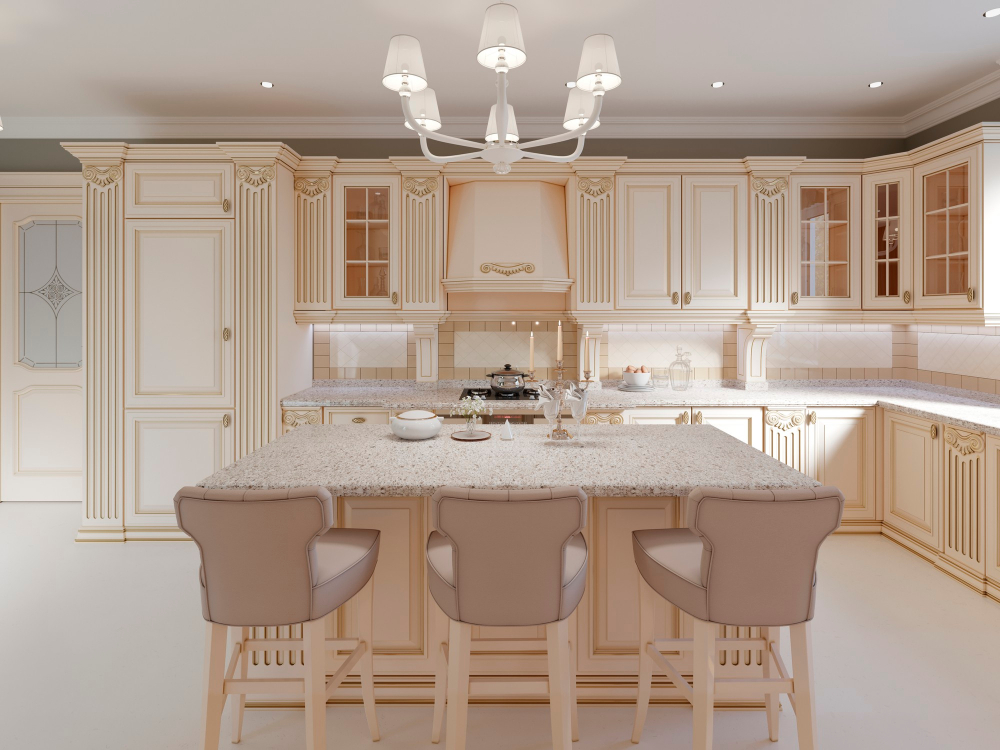
The wall color can significantly impact how much light is reflected in the room and affect its overall brightness. For example, if you have dark-colored walls in your kitchen, you’ll need more lumens to achieve adequate illumination than if you had lighter colored walls.
If you’re unsure about what lumen range will work best with a particular wall color or finish, consult with an expert or do some research online before making any purchases. You may also want to experiment by testing different bulbs’ brightness levels until finding one that works well with your specific wall colors.
In general, neutral tones like white and beige reflect more light than darker shades like navy blue or forest green. So keep this in mind when selecting paint colors for future renovations as well as when choosing new lighting fixtures.
LED Vs. Traditional Bulbs

While both types of bulbs have their pros and cons, LED lights are becoming increasingly popular due to their energy efficiency and longevity. LEDs use less energy than traditional incandescent bulbs, which means they can save you money on your electricity bill in the long run.
They last much longer than traditional bulbs – up to 25 times longer! This means that while an LED bulb may cost more upfront than a standard incandescent bulb, it will ultimately save you money over time by not needing frequent replacements.
Another advantage of LEDs is that they emit very little heat compared to other types of light sources like halogen or fluorescent lamps. This makes them ideal for use in kitchens where cooking generates a lot of heat already.
Energy Efficiency and Savings

Not only does it help reduce your carbon footprint, but it can also save you money on your electricity bill. LED lights are the most energy-efficient option available in the market today.
They use up to 75% less energy than traditional bulbs and last much longer too.
While LED lights may have a higher upfront cost compared to other options, they pay off in the long run with their durability and low maintenance requirements. Many utility companies offer rebates for switching over to more efficient lighting options.
Dimming Options for Flexibility
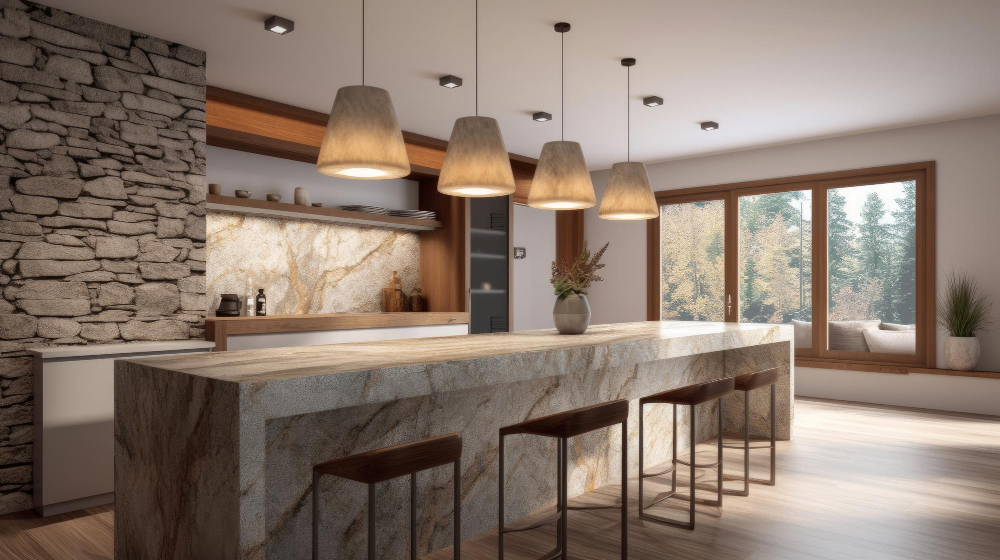
For instance, when cooking a romantic dinner with your partner, you might prefer dimmer lighting to create a cozy and intimate atmosphere. In contrast, when preparing meals for guests or hosting parties at home, brighter lighting is necessary.
Fortunately, many modern light fixtures come with dimming options that allow you to control the intensity of light in your kitchen easily. Dimmable LED bulbs are an excellent choice as they offer flexibility while saving energy and reducing electricity bills.
When choosing dimmable lights for your kitchen space ensure that they are compatible with existing switches and wiring systems in place. It’s also essential to consider how much wattage each bulb requires so that it doesn’t overload circuits or cause flickering issues.
Natural Light Sources
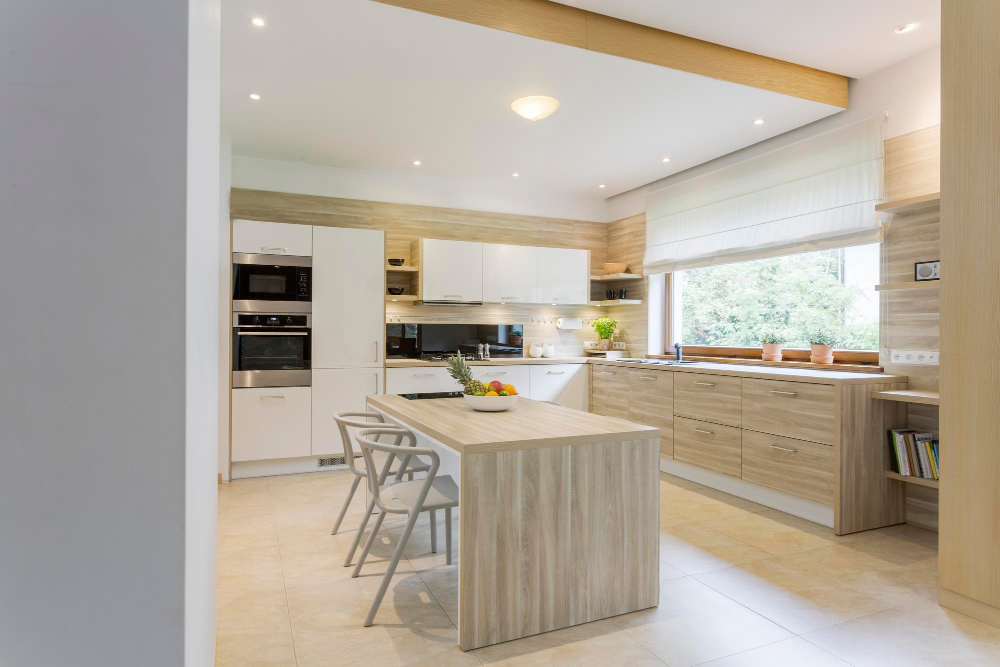
Natural light not only enhances the ambiance of your kitchen but also provides health benefits such as boosting mood and productivity. If you have windows or skylights in your kitchen, take advantage of them by keeping them clean and unobstructed to allow maximum sunlight into space.
If you don’t have any natural light sources available, consider adding some by installing a window or skylight if possible. Alternatively, you could use mirrors to reflect existing natural light around the room.
It’s important to note that while natural lighting is beneficial for kitchens during daylight hours; it may not be sufficient at night when additional artificial lights are needed. Therefore it’s crucial to find an ideal balance between both types of lighting for optimal results throughout all times of day and night.
Color Temperature Choices: Finding the Perfect Balance Between Warm and Cool White Lights
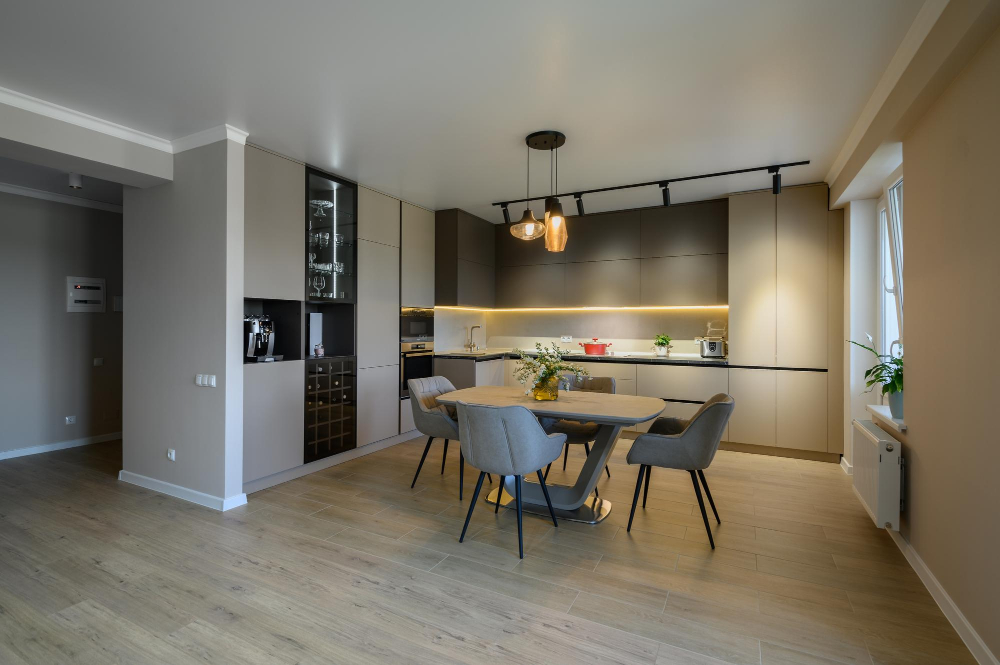
Color temperature refers to the warmth or coolness of a light source and is measured in Kelvin (K). Warm white lights have a lower Kelvin rating, typically between 2700-3000K, while cool white lights range from 3500-4100K.
Warm white lighting creates an inviting and cozy atmosphere that’s perfect for dining areas or relaxing spaces. On the other hand, cooler temperatures are ideal for task-oriented areas like countertops where you need bright illumination.
Finding the perfect balance between warm and cool lighting can be challenging but essential in creating an aesthetically pleasing space that meets your needs. Consider using warmer tones in living spaces within your kitchen such as breakfast nooks or seating areas while opting for cooler tones over workspaces like islands or sinks where food preparation takes place.
Expert Tips for Best Results
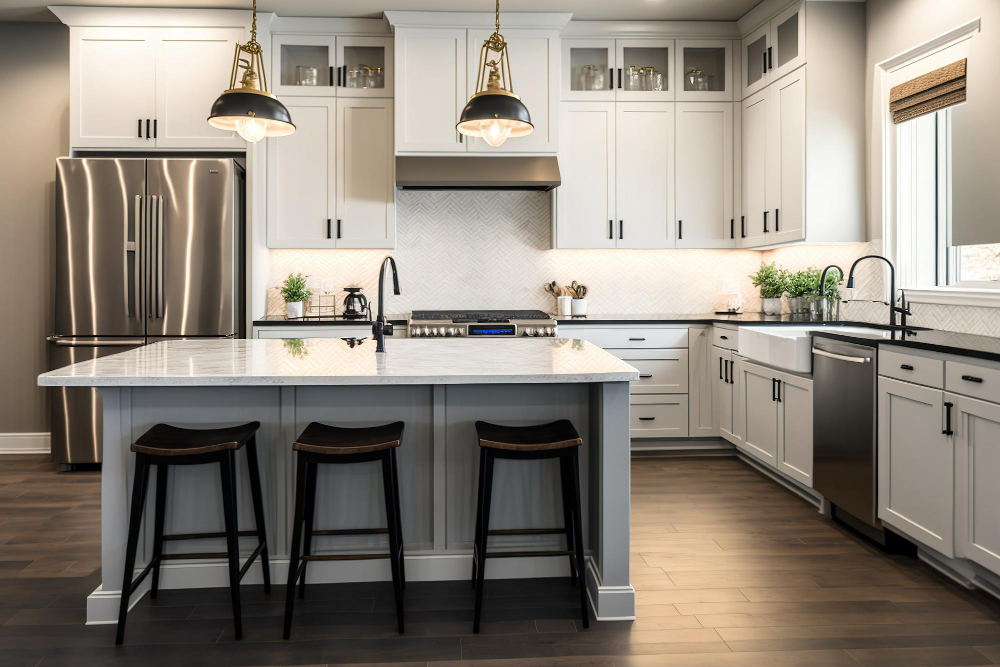
First and foremost, consider layering your lights with ambient, task, and accent lighting. This will create depth in your space while also providing ample illumination for all of your cooking needs.
Another tip is to take into account the size of your kitchen when choosing lumens. A larger space may require more lumens than a smaller one to ensure proper light distribution.
Don’t forget about natural light sources! If possible, incorporate windows or skylights into your design plan as they provide free and beautiful natural light during daylight hours.
Lastly but not least important is safety: make sure that any electrical work is done by a licensed professional electrician who follows local codes and regulations regarding wiring installation in kitchens.
Safety Tips for Kitchen Lighting

Here are some tips to keep in mind:
- Avoid placing lights too close to the stove or other heat sources.
- Use fixtures that are rated for damp or wet locations in areas where moisture is present, such as above the sink.
- Make sure all electrical work is done by a licensed professional.
- Keep cords and wires out of high-traffic areas and away from water sources.
- Install ground fault circuit interrupters (GFCIs) near sinks and other water sources.
Cost and Installation Factors

The cost of your kitchen light will depend on the type of bulb, fixture, and brand you choose. LED bulbs tend to be more expensive than traditional incandescent or fluorescent bulbs but offer long-term savings in energy costs.
Installation is another factor that can affect the overall cost of your kitchen lighting project. If you’re replacing an existing fixture with a new one, installation may be relatively straightforward if there’s already wiring in place for a ceiling-mounted light or under-cabinet lights.
However, if you’re adding new fixtures where none existed before or moving electrical outlets around to accommodate different types of lighting options like pendant lights over an island counter; then professional help may be required which could add up additional costs.
FAQ
What is the best brightness for a kitchen light?
The best brightness for a kitchen light is approximately 4,000-8,000 lumens with a recommended LED color temperature of around 2,700-5,000 K.
Is 2500 lumens bright enough for a kitchen?
Yes, 2500 lumens is bright enough for a kitchen, as it falls within the suggested range of 2000 to 4000 lumens needed for proper lighting.
Are LED lights bright enough for a kitchen?
Yes, LED lights are bright enough for a kitchen, as they provide clean and bright illumination that enhances visibility and usability compared to low light halogen or incandescent bulbs.
Should kitchen lights be warm or bright?
Kitchen lights should be cooler and brighter for better visibility and functionality.
What is the ideal lumen range for kitchen task lighting?
The ideal lumen range for kitchen task lighting is 5,000 to 10,000 lumens.
How does the size of a kitchen affect the required lumens for adequate lighting?
The size of a kitchen affects the required lumens for adequate lighting as larger kitchens need more lumens to ensure proper illumination.
How can you ensure proper distribution of lumens across different kitchen areas, such as countertops and cooking spaces?
Ensure proper distribution of lumens across kitchen areas, like countertops and cooking spaces, by strategically positioning task lighting and brightening general lighting sources.




